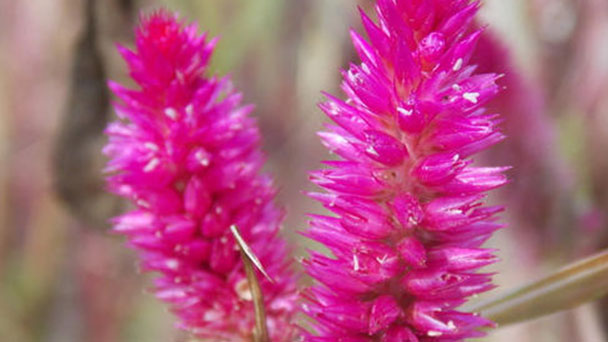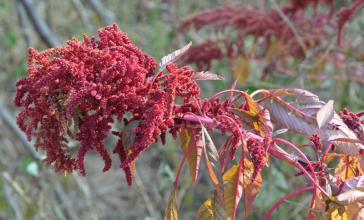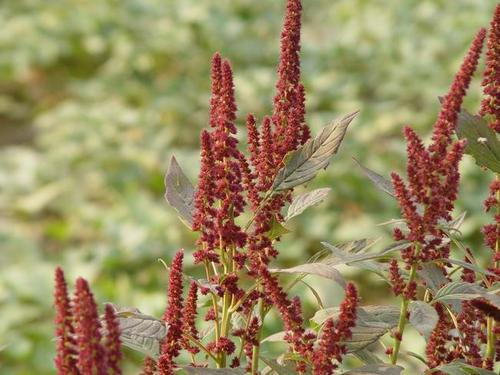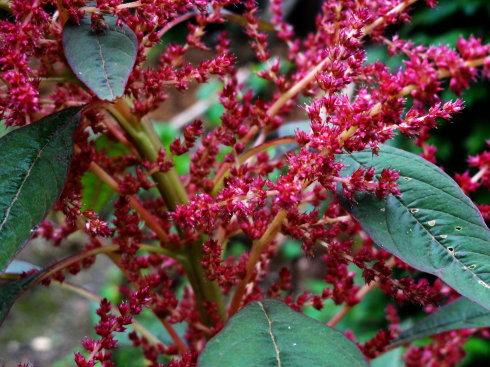Red amaranth (Amaranthus cruentus) profile
Written by Maggie
Mar 10 2021

Red amaranth, scientific name Amaranthus cruentus, is a plant of the family Amaranth, ranging from 20 to 80 cm tall, sometimes up to 1.3 m; Red amaranth stem is erect, stout, pale green, sometimes with purplish stripes. Leaf blade is rhombic-ovate or elliptic ovate-ovate, apex acute or acuminate, slightly convex, base cuneate, pubescent. Panicles of Red amaranth are terminal and axillary, erect, or posteriorly pendulous, formed by many spikes, terminal spikes longer than lateral ones; Bracts and bracteoles are subdued, white; Tepals are white. Utricle is oblate ovate, annular cross - lobed, wrapped in persistent perianth segments. Seeds are subglobose, brown or black.
Red Amaranth is cultivated or wild throughout China. Red amaranth grows from flat ground to 2150 m above sea level. It is widely distributed throughout the world. The stems and leaves of Red amaranth are used as vegetables; Cultivation for ornamental; Seeds are used for food crops, food or wine making.
Red Amaranth picture

Morphological characteristics of red amaranth
Stems
Red Amaranth is 20-80 cm tall, sometimes up to 1.3 m; Stem is erect, stout, pale green, sometimes purplish striped, slightly obtuse.
Leaf
Leaf blade of Red amaranth rhombicular ovate or elliptic ovate-ovate, 5 -- 12 x 2 -- 5 cm, apex acute or concave, slightly convex, base cuneate, pubescent.
Flowers
Red Amaranth is a panicle terminal to axillary, erect, or pendulous, 2 -- 4 cm in diameter, formed by many spikes, terminal spikes longer than lateral ones; Bracts and bracteoles are subulate, 4 -- 6 mm long, white, apex acuminate; Tepals are white, with 1 pale green midrib, apex acute or acuminate, apiculate.
Fruit
Utricle of Red amaranth is oblate ovate, annular transverse cleft, enclosed in persistent perianth segments. Seeds are subglobose, 1 mm in diam., brown or black.
Red stem: leaves of Red amaranth are large and apically pointed or obtuse, leaf surface green, abaxially purplish red. Also some whole plants are red. The early growth is fast, the late growth is slow, the flowering is early, the yield is similar to the green stem seed or slightly lower.
Ecological habits of red Amaranth
Red Amaranth has strong adaptability and can be planted in all parts of China. It grows rapidly with abundant branches and leaves, and its roots are developed. Red amaranth has strong drought tolerance. It can grow well in moderately salinized soils with a salt content of 0.1-0.23% and in acidic and alkaline soils with a pH value of 5.5-8.6. Most types of amaranth can still grow normally in mid - to late October, and only stop growing when there is frost.
Red amaranth propagation
The seeds of Red amaranth are small, with a diameter of less than 1 millimeter, so the soil should be carefully prepared, and at the same time, sufficient bottom fertilizer should be applied to create good drainage conditions.Amaranth is a warm crop. Red amaranth can be sown when the temperature is stable at 14 degrees, and the seedlings can emerge in 3-5 days. The seeding method can be either direct seeding or seedling transplanting. When seeding, the seeds will be sown with fine soil, fine sand or fire ash, or a thin layer of fine soil can be covered after sowing the net seeds. Requirement in good drainage (not waterlogging after rain) spring back warm fast, and soil preparation in the soil sowing. Soil moisture should not be too high.Sowing depth of 2-3 cm is appropriate, when the whole farmland, according to the row distance to pull the trample, ditch ditch, and then sprinkle, point seeds (also a section of bamboo tube, the bamboo diaphragm with a small hole with iron wire, ditch shaking bamboo tube slip seeds), the seed after the soil cover 2-3 cm, gently suppress with the foot. Sowing amount 1 acre of land 50 grams or so, if there is seedling transplanting, sowing amount can be halved. Some plots of Red amaranth can also use no-tillage and furrow sowing method. Due to the rapid growth of amaranth, it is generally not necessary to plough and weed.

How to grow and care for red amaranth
Singling
For the plots of direct seeding, thinning should be carried out when the plant height is 10 cm (2-3 leaf stage). At this time, if the seedlings of red amaranth emerge inevenly, the seedlings can be replenished locally. Plant height 20 cm (4-5 leaf stage) can be fixed seedlings.
Row
Seedling growth is slow and weak, to timely weeding, to prevent bullying seedlings. In the middle and late period, the growth is fast, and the branches and leaves are lush. In order to suppress weeds, the soil should be loosened and cultivated in time, and the soil should be preserved and prevented from falling.
Fertilizer
Red Amaranth is a crop with high net photosynthesis. In addition to full base fertilizer, topdressing urea should be applied in the middle and later stage. It is appropriate to use 4,000 kg of rotten barnyard manure per mu of base fertilizer, and topdressing fertilizer should be converted into 20-30 kg of urea per mu. Red amaranth is a potassium-rich plant. In the case of potassium deficiency in the soil, appropriate potassium fertilizer is best applied.
Moisture
Red Amaranth is drought resistant but not stain resistant. Irrigate water to protect seedlings in the seedling stage. Irrigate water to fight drought in the middle and late stage when drought lasts more than 20 days. In case of rain, it should be combined with soil cultivation to clear ditches and remove stains, so as to promote the development of plant roots.
Training
Knocking off the side branches that affect the appearance, so that it is neat, conducive to the growth of inflorescence of the plant form development.
Disease control of red amaranth
During the seedling stage of Red amaranth, attention should be paid to the control of underground pests, such as mole crickets, ground worms, etc. Carbofuran can be used for soil treatment or seed companion. After the emergence of trichlorfon can be made into poison bait to kill tigers. Intermediate use polymycelium add pentachloronitrobenzene, according to the ratio of 1:1 made of 0.2% of the soil, soil sprinkled into the root, can prevent root rot. During the flowering period, the insect bugs and leaf-eating pests were controlled by enemy killing or oxidizing dimethyl fruit.
The use of red amaranth
Forage value
Red Amaranth is an excellent pig feed with high yield and palatability. Because of its strong adaptability, easy management, fast growth and strong regeneration, it is a very important summer forage crop.
Edible value
Stems and leaves of Red amaranth can be used as vegetables; Seeds are used for food crops, food or wine making.
Ornamental value
Red Amaranth cultivated for ornamental use.

Latest Updated
- Benefits of Bugleweed - 7 Science-backed Health Benefits
- Bugleweed Dangers & Side Effects - Is It Poisonous?
- How to Plant Evergreen Trees - What You Should Know
- When to Plant Evergreens - Grow Guide for Evergreen Trees
- 12 Wonderful Evergreen Shrubs for Your Garden
- 12 Popular Evergreen Plants with Pictures for Beginners
- When And How To Prune A Lilac Bush Like a Pro
- How to Grow & Care for Lilac Vine (Hardenbergia Violacea)
- Japanese Lilac Tree (Syringa Reticulata) Care & Propagation Guide
- Shumard Oak Pros and Cons - What to Know
Popular Articles
- Winter maintenance of Antirrhinum Majus
- How to Grow Terminalia Mantaly Tree
- How to Grow and Care for Crossostephium Chinense
- How to grow Antirrhinum Majus in spring
- Peristeria Elata (Dove Orchid) Profile: Info & Care Guide
- Underwatered Snake Plant (Sansevieria Trifasciata) - Signs And How To Fix
- How to Care for Brazilian Jasmine Plant (Mandevilla Sanderi)
- How to Grow & Care for Graptopetalum Purple Delight in Summer
- Rosa Chinensis (China Rose): Plant Growing & Care Tips
- How to Care for Baby Sun Rose (Aptenia Cordifolia)